Abstract
We taught 4 students with profound multiple disabilities to use a microswitch communication system to request a change in recreational stimuli during social interactions with nondisabled peers. In Study 1, we conducted a preference assessment across a range of stimuli for each student. The most and least preferred stimuli were incorporated into microswitch communication system training in Study 2. During the second study, 3 of the 4 students (a) learned to use the microswitch communication system to control stimulus presentation, (b) more clearly differentiated their time among stimuli, and (c) increased their level of general alertness. Study 3 extended the use of the microswitch communication system to social interactions with nondisabled peers. Two students were more engaged in interactions when they chose when to change stimuli; 1 student was more alert when a peer chose when to change activities; a 4th student showed an undifferentiated pattern. The outcomes of the investigation are discussed in terms of the effects of controlling stimulus presentation on the behavior of students with profound multiple disabilities and the stability of preference hierarchies over time.
Full text
PDF

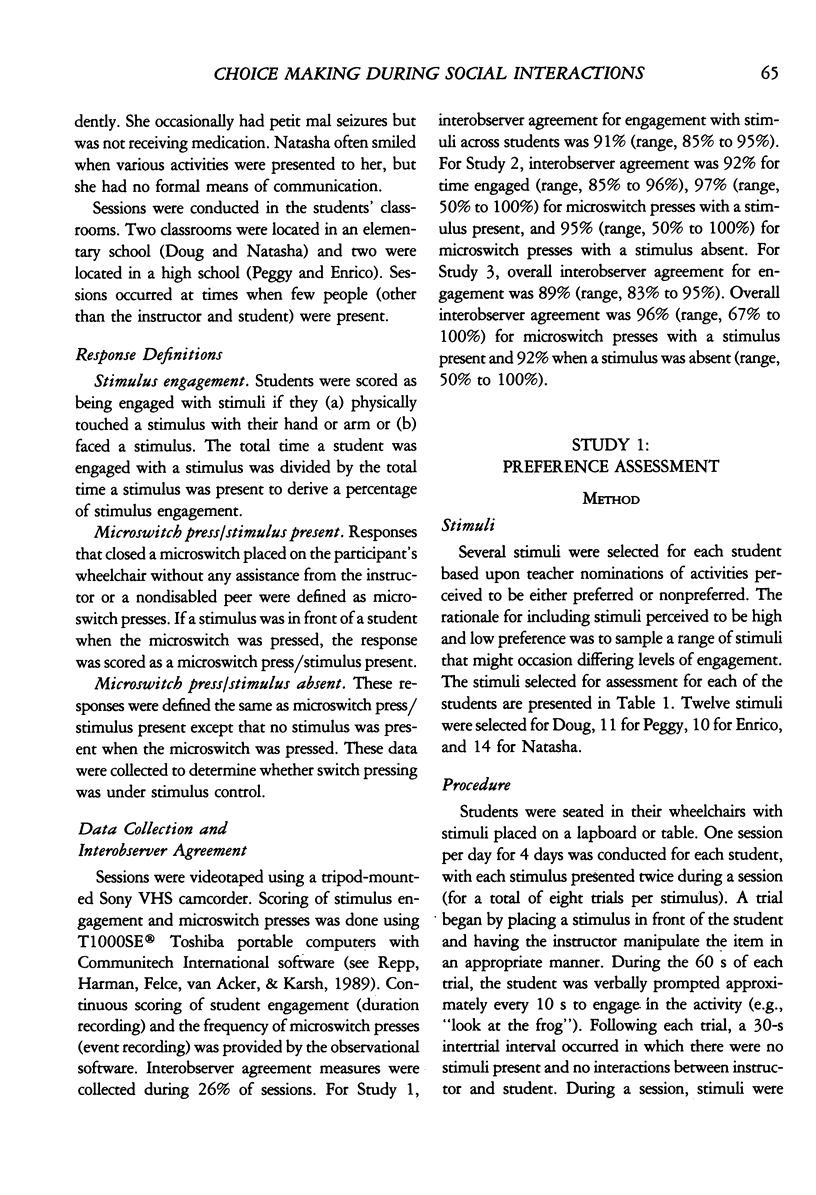

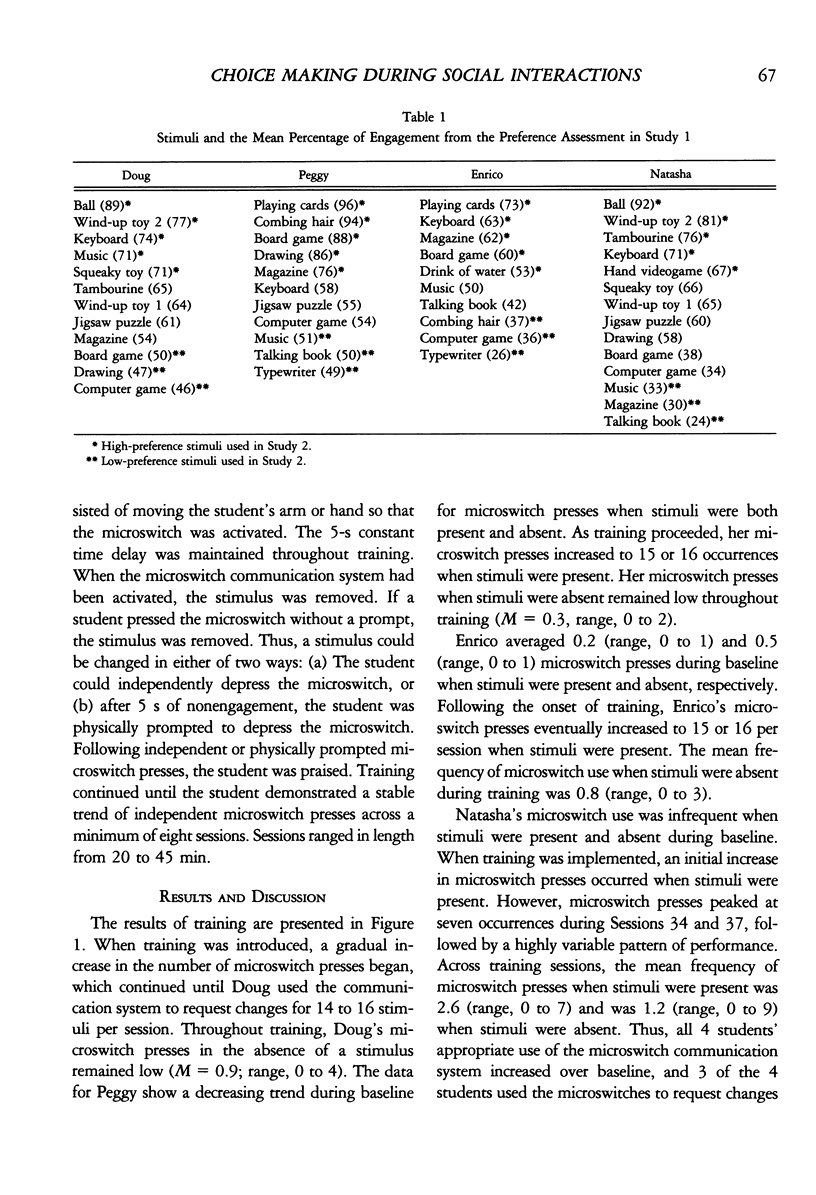
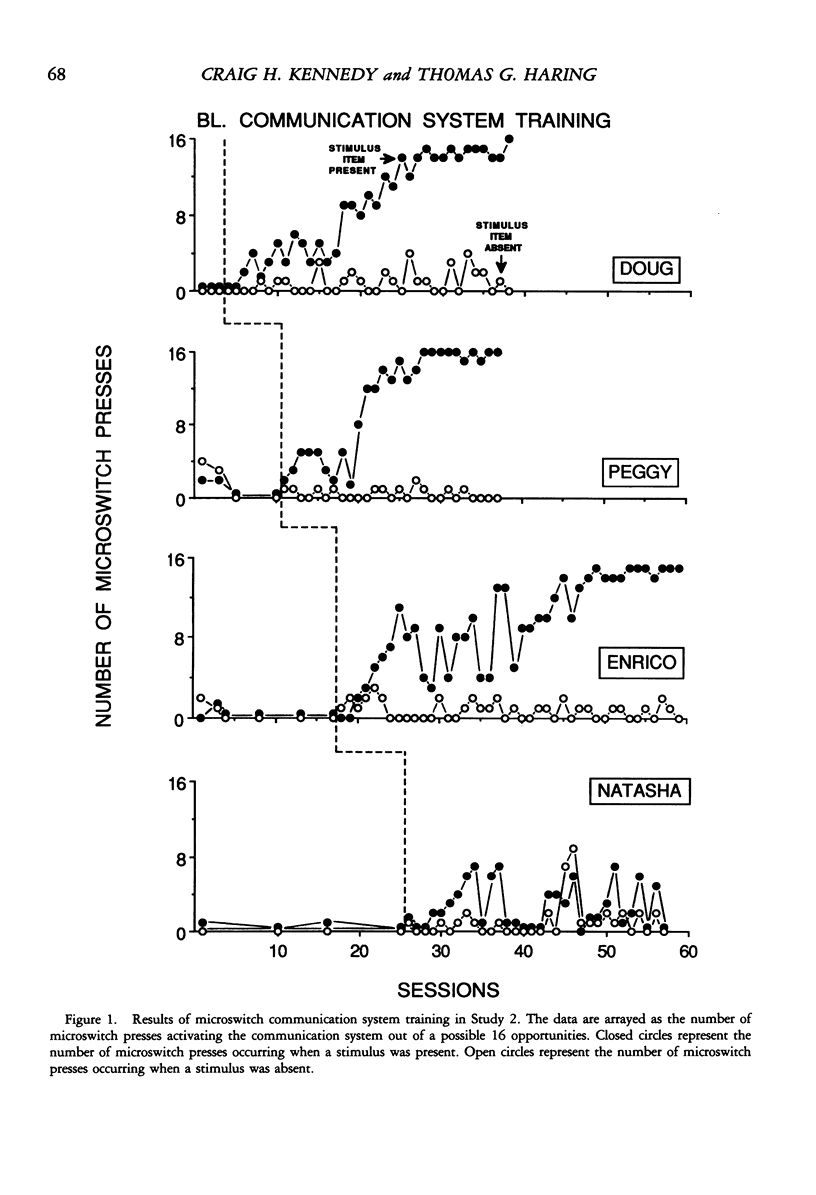

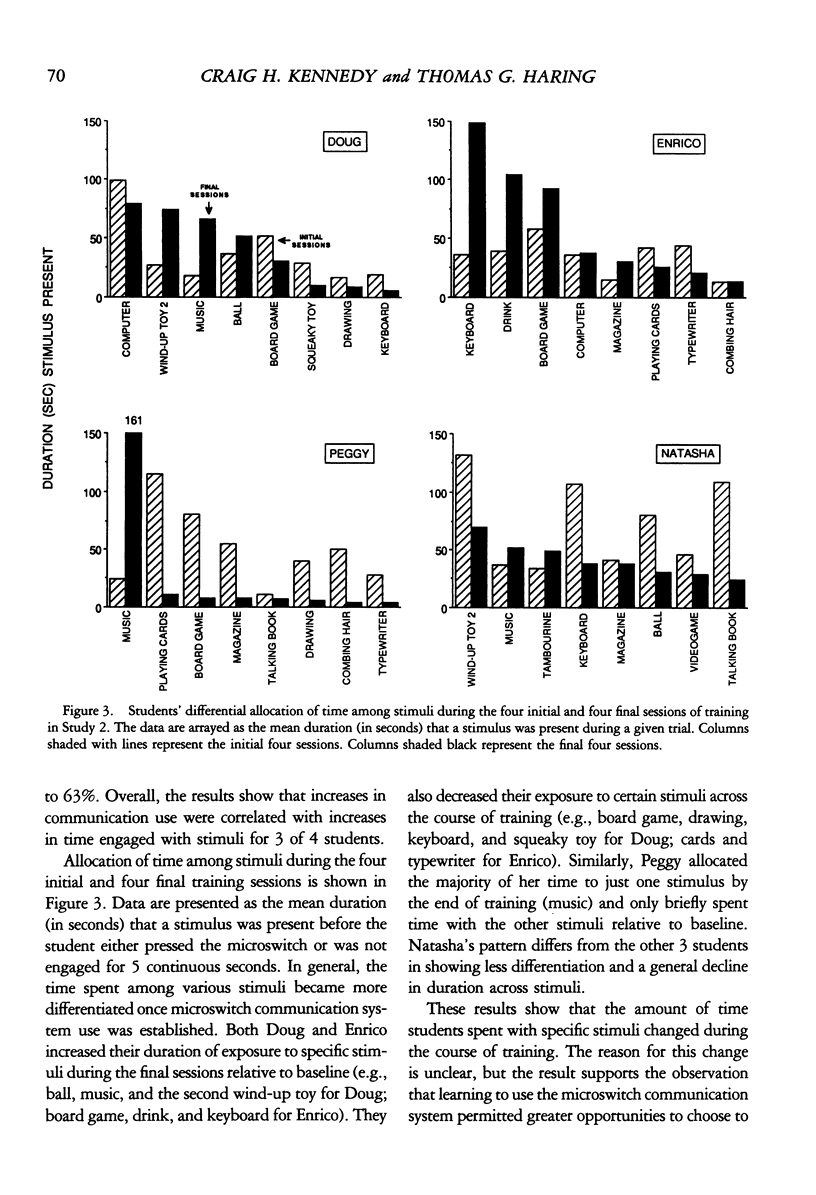
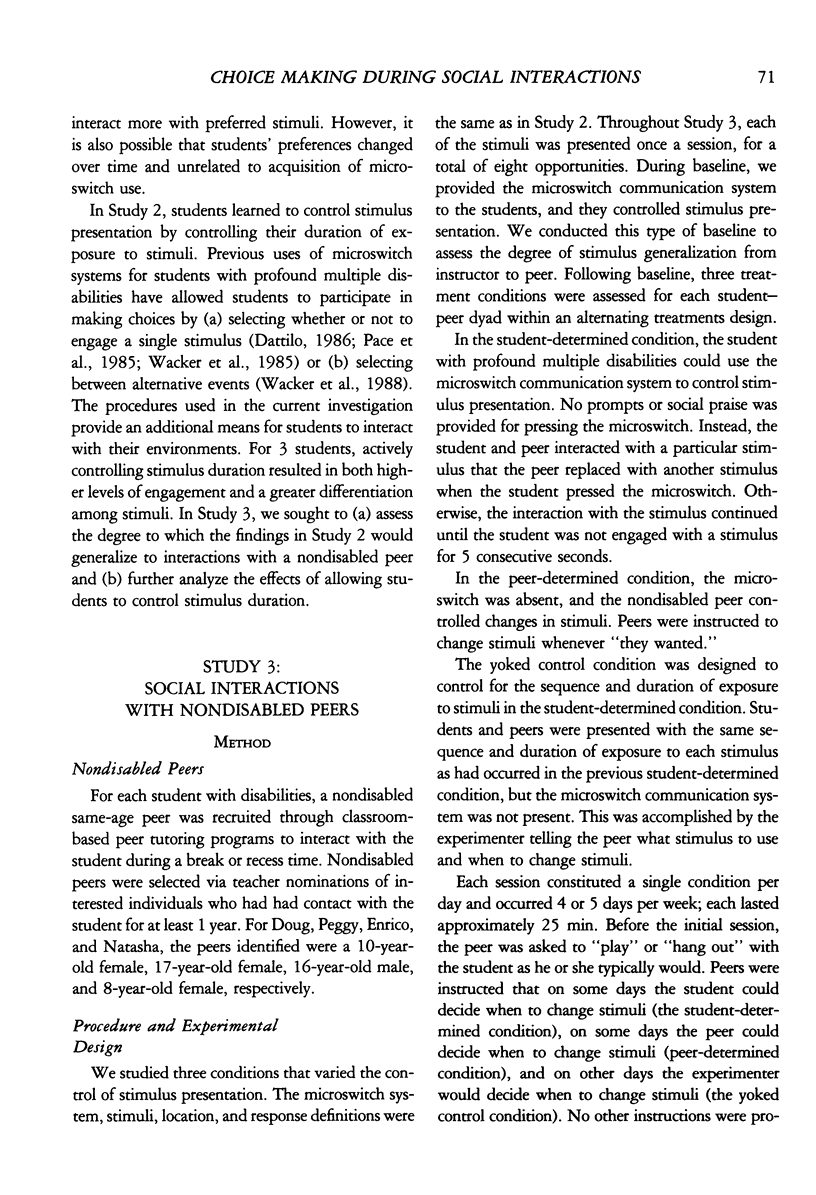
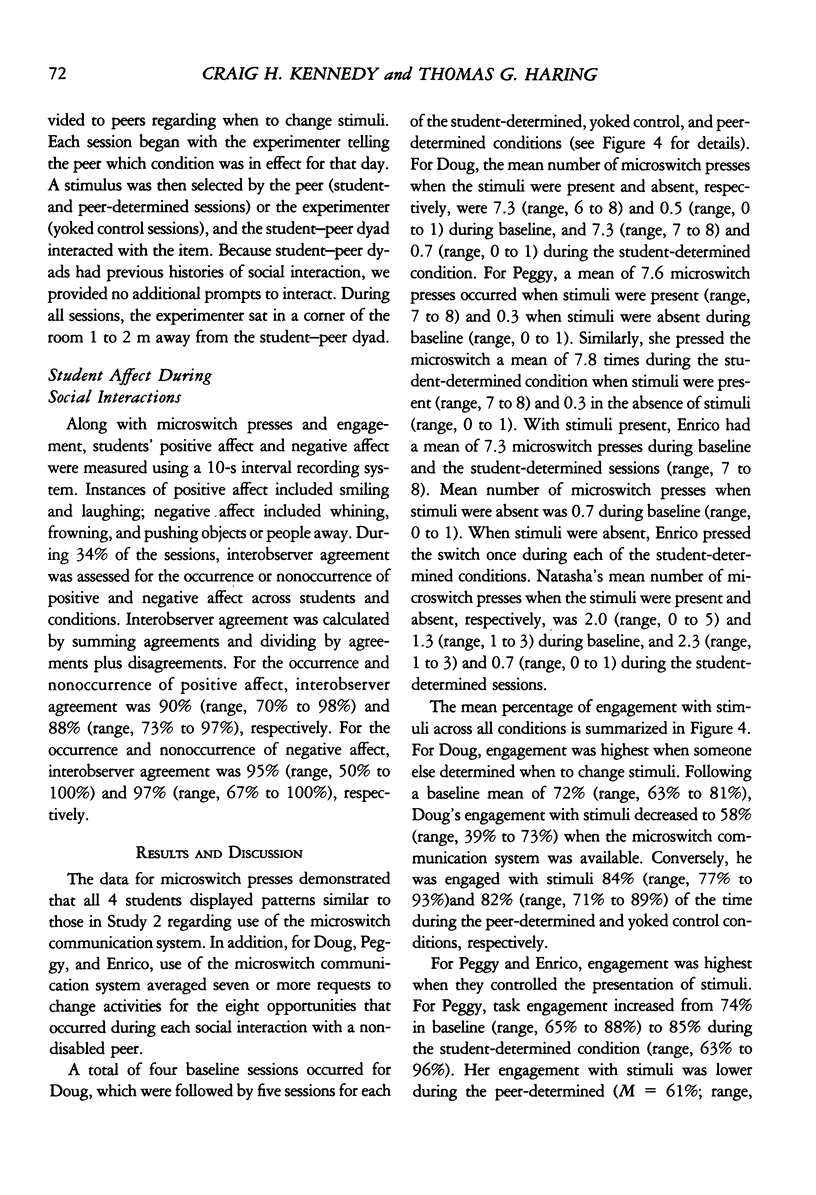
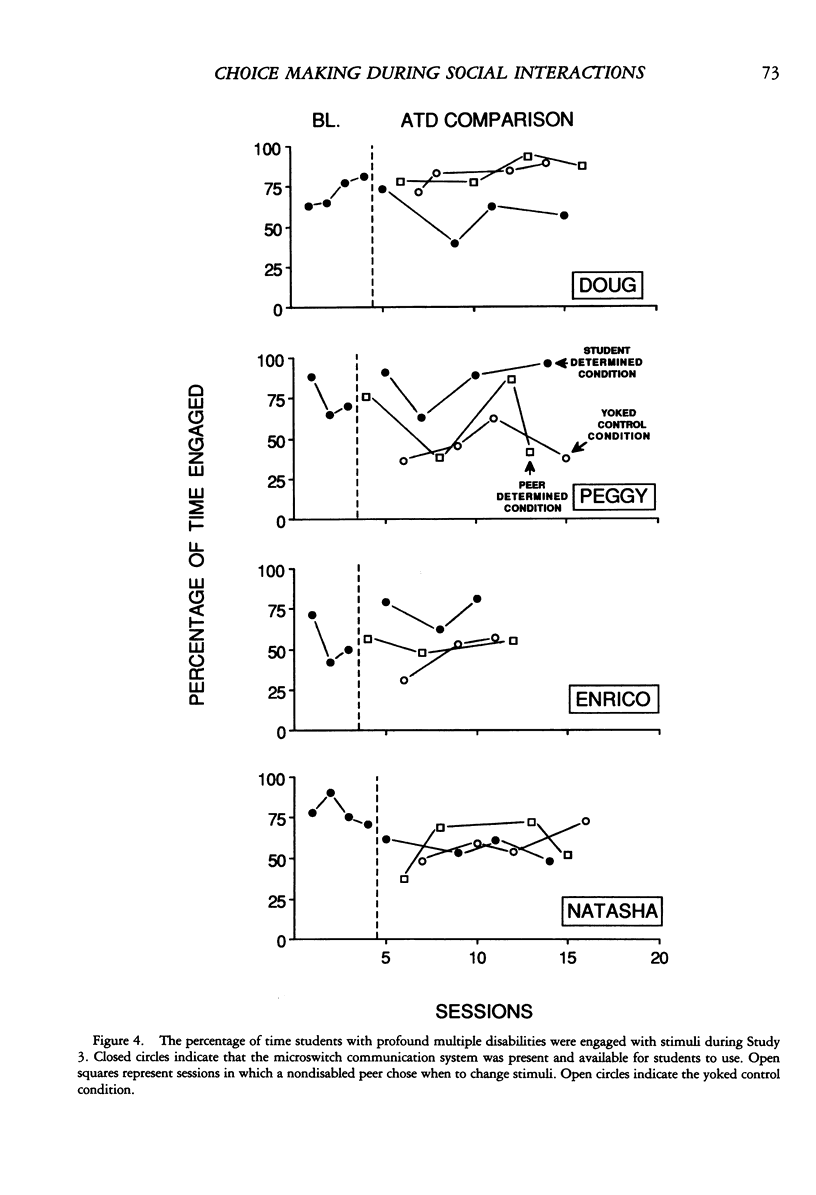


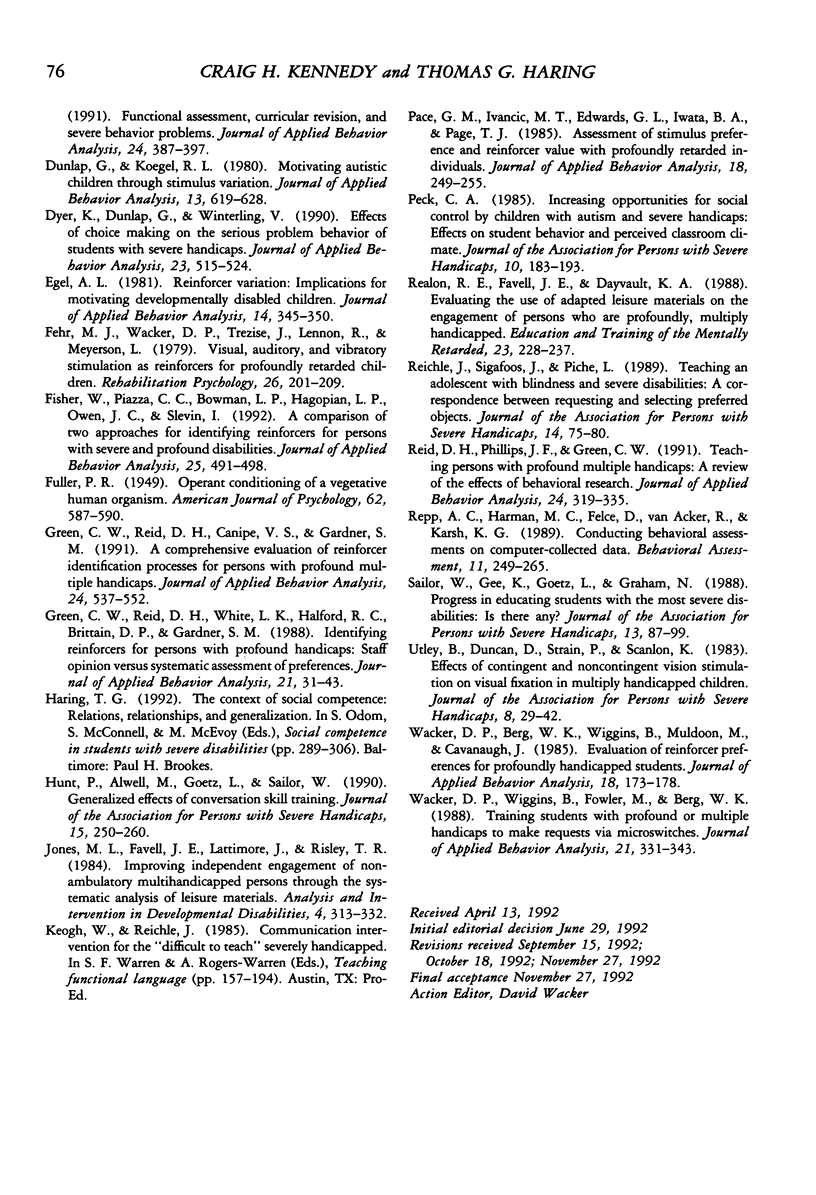
Selected References
These references are in PubMed. This may not be the complete list of references from this article.
- Bailey J., Meyerson L. Vibration as a reinforcer with a profoundly retarded child. J Appl Behav Anal. 1969 Summer;2(2):135–137. doi: 10.1901/jaba.1969.2-135. [DOI] [PMC free article] [PubMed] [Google Scholar]
- Dattilo J. Computerized assessment of preference for severely handicapped individuals. J Appl Behav Anal. 1986 Winter;19(4):445–448. doi: 10.1901/jaba.1986.19-445. [DOI] [PMC free article] [PubMed] [Google Scholar]
- Dunlap G., Koegel R. L. Motivating autistic children through stimulus variation. J Appl Behav Anal. 1980 Winter;13(4):619–627. doi: 10.1901/jaba.1980.13-619. [DOI] [PMC free article] [PubMed] [Google Scholar]
- Dunlap G. The influence of task variation and maintenance tasks on the learning and affect of autistic children. J Exp Child Psychol. 1984 Feb;37(1):41–64. doi: 10.1016/0022-0965(84)90057-2. [DOI] [PubMed] [Google Scholar]
- Dyer K., Dunlap G., Winterling V. Effects of choice making on the serious problem behaviors of students with severe handicaps. J Appl Behav Anal. 1990 Winter;23(4):515–524. doi: 10.1901/jaba.1990.23-515. [DOI] [PMC free article] [PubMed] [Google Scholar]
- Egel A. L. Reinforcer variation: implications for motivating developmentally disabled children. J Appl Behav Anal. 1981 Fall;14(3):345–350. doi: 10.1901/jaba.1981.14-345. [DOI] [PMC free article] [PubMed] [Google Scholar]
- FULLER P. R. Operant conditioning of a vegetative human organism. Am J Psychol. 1949 Oct;62(4):587–590. [PubMed] [Google Scholar]
- Fisher W., Piazza C. C., Bowman L. G., Hagopian L. P., Owens J. C., Slevin I. A comparison of two approaches for identifying reinforcers for persons with severe and profound disabilities. J Appl Behav Anal. 1992 Summer;25(2):491–498. doi: 10.1901/jaba.1992.25-491. [DOI] [PMC free article] [PubMed] [Google Scholar]
- Green C. W., Reid D. H., Canipe V. S., Gardner S. M. A comprehensive evaluation of reinforcer identification processes for persons with profound multiple handicaps. J Appl Behav Anal. 1991 Fall;24(3):537–552. doi: 10.1901/jaba.1991.24-537. [DOI] [PMC free article] [PubMed] [Google Scholar]
- Green C. W., Reid D. H., White L. K., Halford R. C., Brittain D. P., Gardner S. M. Identifying reinforcers for persons with profound handicaps: staff opinion versus systematic assessment of preferences. J Appl Behav Anal. 1988 Spring;21(1):31–43. doi: 10.1901/jaba.1988.21-31. [DOI] [PMC free article] [PubMed] [Google Scholar]
- Pace G. M., Ivancic M. T., Edwards G. L., Iwata B. A., Page T. J. Assessment of stimulus preference and reinforcer value with profoundly retarded individuals. J Appl Behav Anal. 1985 Fall;18(3):249–255. doi: 10.1901/jaba.1985.18-249. [DOI] [PMC free article] [PubMed] [Google Scholar]
- Reid D. H., Phillips J. F., Green C. W. Teaching persons with profound multiple handicaps: a review of the effects of behavioral research. J Appl Behav Anal. 1991 Summer;24(2):319–336. doi: 10.1901/jaba.1991.24-319. [DOI] [PMC free article] [PubMed] [Google Scholar]
- Wacker D. P., Berg W. K., Wiggins B., Muldoon M., Cavanaugh J. Evaluation of reinforcer preferences for profoundly handicapped students. J Appl Behav Anal. 1985 Summer;18(2):173–178. doi: 10.1901/jaba.1985.18-173. [DOI] [PMC free article] [PubMed] [Google Scholar]
- Wacker D. P., Wiggins B., Fowler M., Berg W. K. Training students with profound or multiple handicaps to make requests via microswitches. J Appl Behav Anal. 1988 Winter;21(4):331–343. doi: 10.1901/jaba.1988.21-331. [DOI] [PMC free article] [PubMed] [Google Scholar]


